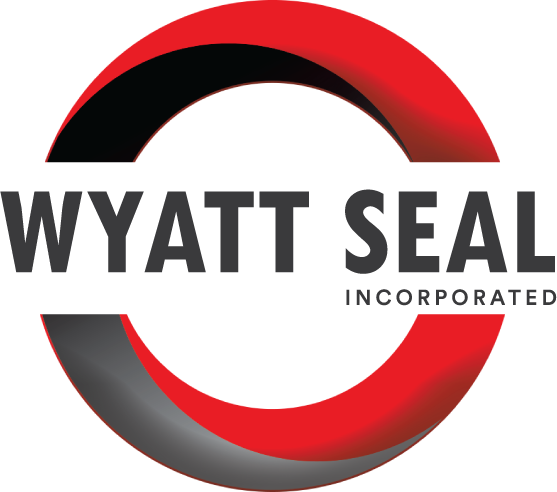
When a satellite is launched into orbit, there’s no room for error. Once it leaves Earth’s atmosphere, even a microscopic leak in a propulsion valve or sensor housing could mean millions of dollars in lost equipment—or lost data. In these extreme conditions, where there’s no air, no margin, and no second chances, seals do the quiet but critical work of keeping systems airtight, stable, and safe.
At Wyatt Seal, we’ve supported engineers tackling challenges just like these—helping design and supply vacuum-rated sealing solutions that perform reliably in the punishing environment of aerospace systems. From propulsion and cryogenic testing to satellite assembly and ground simulation chambers, our expertise helps ensure that every seal stands up to the demands of space and the precision of those who build for it.
Contact our team to discuss your aerospace sealing requirements and learn how we help customers design for zero failure.
The Challenge of Sealing a Vacuum
Creating a perfect seal in a vacuum isn’t about holding pressure in—it’s about keeping it out. With no atmospheric resistance, seals must maintain integrity entirely through material performance and precision compression. This becomes even more complicated when facing:
- Outgassing: In space, trapped gases in standard elastomers can release and cloud sensitive optical instruments.
- Temperature Extremes: Materials must endure swings from -238°F (−150°C) in shadow to over 392°F (200°C) in direct sunlight.
- Radiation Exposure: Prolonged UV and cosmic radiation can degrade lesser materials, compromising performance.
- Long-Term Compression Set: Seals must maintain shape and elasticity for years, even without maintenance or replacement.
These challenges make aerospace vacuum sealing one of the most technically demanding environments for material selection and seal design.
Materials That Stand Up to Space
At Wyatt Seal, we collaborate with world-class manufacturers to provide high-performance materials engineered for aerospace reliability, including:
- FFKM (Perfluoroelastomer): Delivers unmatched chemical resistance and thermal stability—ideal for propulsion and cryogenic systems.
- FKM (Fluoroelastomer): Offers durability and low outgassing performance for instrumentation and fuel transfer systems.
- PTFE (Polytetrafluoroethylene): Handles high vacuum environments with near-zero gas permeability and exceptional wear resistance.
Whether you’re building hardware that leaves Earth or systems that simulate space on the ground, our seals are built to last—because failure isn’t an option.
Seal Types and Their Aerospace Applications
Every aerospace vacuum system has its own performance requirements—and the right type of seal can make all the difference. Here’s how various sealing solutions are used in the field:
- O-Rings: Found throughout propulsion assemblies, cryogenic lines, and vacuum chambers. O-rings provide static and dynamic sealing in valves, pumps, and coupling systems, where reliability under fluctuating temperatures and pressures is essential.
- Gaskets: Common in instrumentation housings, satellite enclosures, and avionics compartments. Gaskets provide a broad sealing surface that maintains uniform compression, ensuring protection from environmental exposure and vacuum leaks.
- Bonded Seals: Used in hydraulic fittings and pressure transducers. These combine the reliability of a metal washer with the elasticity of a rubber insert to create a secure seal under vibration and extreme pressure changes.
- Custom Molded Seals and Profiles: Utilized in specialized vacuum systems, such as cleanroom interfaces, hatch seals, or test chamber doors. These are precision-engineered to fit complex geometries and maintain compression under continuous thermal cycling.
- Encapsulated Seals: Often used where chemical resistance and low outgassing are required—such as in fuel handling or optical systems—combining a PTFE or FEP jacket with an elastomer core for flexibility and purity.
Wyatt Seal’s technical team helps customers select not just the material, but the seal design and geometry that ensures optimal performance for their specific aerospace system.
Real-World Applications: From Earth to Orbit
Aerospace sealing isn’t theoretical—it’s mission-critical. Wyatt Seal supports customers working in:
- Environmental Test Chambers: Vacuum-rated O-rings and gaskets that hold perfect seals during high-altitude and space simulation testing.
- Satellite and Propulsion Systems: Seals that withstand high pressure, temperature swings, and chemical exposure in orbit.
- Fuel Transfer and Cryogenic Systems: Precision-engineered seals that maintain integrity during rapid thermal transitions.
- Vacuum Pumps and Valves: Low-outgassing seals that preserve internal cleanliness and prevent performance drift over time.
Your Partner for Precision Sealing Solutions
Aerospace projects depend on partners who can match their precision. Wyatt Seal delivers that partnership—combining decades of experience with access to the industry’s most advanced sealing technologies. Our team works closely with customers to select materials, validate designs, and ensure that every seal meets the exacting standards of aerospace performance. When your application is in a vacuum, you don’t have to be—Wyatt Seal is here to provide expert support every step of the way.
If you need help navigating this process to find the right seal for your project, talk to a seal expert at Wyatt Seal. We’ve spent 50 years building relationships with seal manufacturers worldwide to offer you access to thousands of seals, gaskets, O-rings, and other specialty items for any application.

